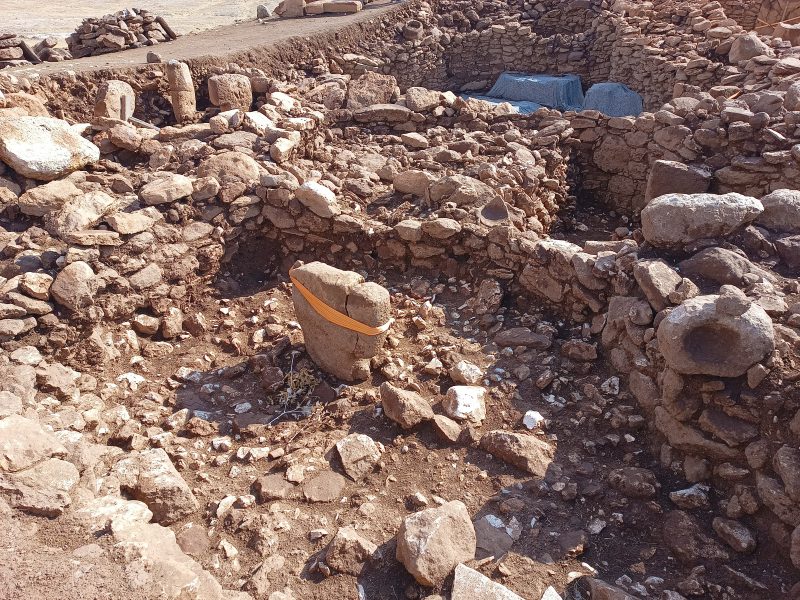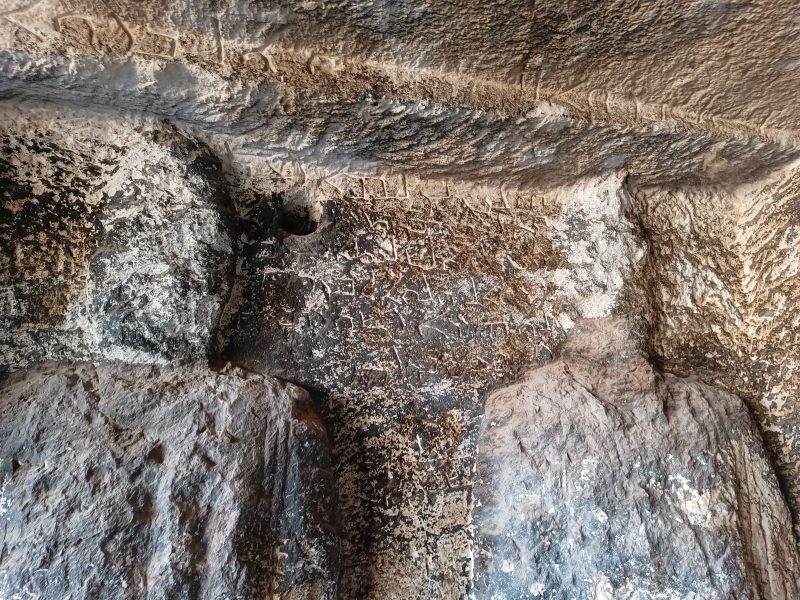Gobleki tepe and Karahan tepe
The world’s oldest Neolithic sites, Gobleki tepe and Karahan tepe date from around 9000 BC. Their discovery changed how archaeologists tracked human history. Before Gobleki tepe it was thought that humans developed agriculture after which megaliths and religion emerged.
Nope. Throw out the old books. The builders of Gobleki tepe were hunter gatherers who hadn’t yet discovered the wheel and yet managed to erect this megalithic site filled with giant statues. Was it a temple? That’s the supposition but no one really knows. A recently discovered cistern means there may have been a settlement. It was in use from 9500 to 8000 BC.
Visiting these two sites was the purpose of my visit (or pilgrimage?) to this strange corner of Turkey.
I started roughly around 9:30 from Sanliurfa with Sore tours. One other guy joined us, a Turk who was late. Radwan is a Kurd who pointed out that Kurds were prompt, unlike Turks!
As a side note, the region is also heavily infiltrated by the PKK, a Kurdish separatist group.
Gobleki Tepe
Radwan spoke excellent English and clearly had read up on the subject. As we approached he pointed to another mound next to the main excavation point that had two trees on top of it. In his view there’s probably more to discover under that mound as it was slightly higher than the excavated portion.
The site is very slickly presented. We began in the visitor center which explained the background of the site, what is known about it, how it was discovered and what may remain to be discovered. A multimedia presentation richly evoked what may have been the rites performed at the site. There was drumming under the stars and it all looked very psychedelic.
There was also a reproduction of the famous pillar 43 with its mysterious engravings. In the lower left a vulture appears to be holding a human skull. Skull cult or what? So there’s that.

Rather than take a mini bus to the excavation point we walked along a boarded walkway which added to the sense of anticipation.
Being there emphasized just how visible the site was from a very long way. The plains stretched to the horizon broken only by other smaller mounds. The site may have attracted people from around the region who came to find mates and/or participate in rituals.

The site is covered to prevent damage from the elements.

What struck me was just how small the enclosures were. I had expected them to be bigger. They were intimate spaces totally dominated by the giant statues with their mysterious carvings. The statues are in the center surrounded by stone benches. Why?

The T-shaped pillars are abstract representations of humans. Some wore belts (hard to see here) Why abstract? They knew how to make lifelike sculptures.



Why a fox? What did it signify?

Pillar 43. Is there an astronomic message? Are the designs along the top meant to represent a comet? Maybe the one that might have struck earth several thousand years earlier wiping out the mammoths and a prior civilization? What’s up with the vulture? Did the scorpion refer to the Scorpius constellation?

There’s that fox again.

Is that a large cat of some sort?

Ducks

More critters

Bull?
A great deal more is on exhibit in the Sanliurfa Archaeological Museum which is currently closed for repairs after a flood destroyed the electrical system
Will have to go back!
Radwan went with a time capsule theory similar to the one proposed by Graham Hancock on the Ancient Apocalypse Netflix series . He pointed out that the site was intentionally buried and that people traditionally bury valuable things like their gold or their money. Given the size of the site it was clearly a great deal of work to pour dirt and refuse over that entire area. Why did they do it? Were future generations supposed to receive a message?
Being there only deepened the incredible mystery around this site. I did not know that the Germans were no longer in charge of the excavation but that it had been taken over by Turkish archaeologists who in fact have not been excavating it. Less than 5% of the site has been excavated! If we uncovered the rest I wonder what secrets we would discover.
But excavations are expensive and Turkey has financial problems.
We must have spent a couple of hours at this site. I don’t know. I was so enthralled I wasn’t looking at the time.
In somewhat of a daze we headed to the car and started the long drive to Karahan tepe. The landscape was mostly flat except for the mounds.
Radwan pointed out that there are over 30 sites revealed by ground-piercing radar that have not been excavated. As we looked around he asked us to notice how many mounds there were on the landscape that very well could have been artificial. In his view, (I believe that he keeps up with archaeological news through the local press), the entire basin was the site of a large civilization.
We stopped at a local service station and bakery and market to pick up fruit and bread for our picnic at Karahan Tepe.
Karahan Tepe
The site was in the middle of nowhere. Unlike Gobleki tepe, 46km to the east, Karahan tepe is not “managed”. There’s no protective covering which means that many statues have been removed to the Sanliurfa Archaeological Museum. It’s also a wilder and more evocative site.
The effect was even more odd and unusual then Gobleki tepe. The stone was different. Some of the carvings (fox) were the same as Gobekli tepe although it’s thought that this site is a few hundred years older. Naturally I was looking for the amazing 7-foot statue of a male that was only discovered a few weeks earlier. It’s the oldest human statue on earth.
We looked and looked and all I could find was the site where it once stood. The caretaker informed us it was not possible to leave that statue standing 7 ft high because it was too fragile. He said that it was cut in three pieces and laid on the ground.
Excavation work is actively continuing at Karahan tepe. There’s a great deal of excitement around this site. Unlike Gobleki tepe, Karahan has a winter solstice alignment.





Where the statue of a man once stood.

Sogmatar
After chatting with the caretaker over fruit and tea we left for the long drive to Sogmatar. The rolling landscape was stony and not cultivated. The road wound on and on with nothing in sight but more stones. It was strange and a little scary. Finally we got to this isolated village. It was a pagan site where sacrifices were once made to the Sun and Moon gods and was in use from 150-200AD. Their effigies are carved into the side of a cave.




Is it possible that the builders of Gobleki Tepe lived in caves just like this one?
Then we climbed to the top of the open air altar which afforded magnificent views around the region.
The regional rumor is that Moses lived in Sogmatar after escaping from the Pharaoh. The desolation and isolation of the village made it easy to imagine a link to the Bible. There were a few people living in these mostly abandoned buildings and some of the children accompanied us down from the altar. The main occupation was tending sheep.


What a day!


Comments
Gobleki tepe and Karahan tepe — No Comments
HTML tags allowed in your comment: <a href="" title=""> <abbr title=""> <acronym title=""> <b> <blockquote cite=""> <cite> <code> <del datetime=""> <em> <i> <q cite=""> <s> <strike> <strong>